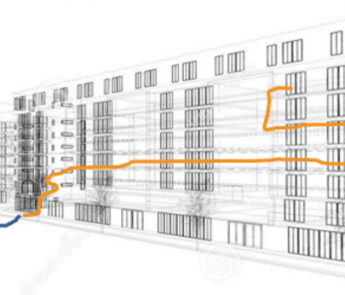 Three more months of hard focused research effort has finally given us some great progress. Time flies when you have fun. From our initial success of getting below 10m, we had a very hard time to repeat this without tweaking parameters for each building. Some very strange effects emerged when using real data of a larger area and for other buildings. We think now we understand the basics of these effects and have been able to compensate for them in our algorithms.
1) Learning algorithms (main focus for our project).
To repeat again, our goal is no manual learning and no calibration! All learning should be based on our crowd sourced data.
Three more months of hard focused research effort has finally given us some great progress. Time flies when you have fun. From our initial success of getting below 10m, we had a very hard time to repeat this without tweaking parameters for each building. Some very strange effects emerged when using real data of a larger area and for other buildings. We think now we understand the basics of these effects and have been able to compensate for them in our algorithms.
1) Learning algorithms (main focus for our project).
To repeat again, our goal is no manual learning and no calibration! All learning should be based on our crowd sourced data. We have now been able to develop more robust algorithms and can now repeat our improvements in many buildings. The median error of scan and wifi position is now between 9-15m almost everywhere, depending on densitity and quality of measurements. One major issue we found was that we had a huge problem if a wifi only had weak scan measurements (<-70dBm). Then this wifi was after our algorithms very far away (km) and with a very low damping factor. Even if these wifis were weak, they destroyed our indoor positioning accuracy so we had to take care of them in some way. But we have found some magic tricks to our algorithm that now make our optimizations much more robust.
Initial tests on real data, outdoor and indoor, shows now very promising results.
We have now also added detection of multi SSID from a single wifi, so we can optimize that these SSIDs should be from same wifi location. This improves a lot when we are in buildings with commercial wifi networks. These wifi networks also often have each SSID power regulated, which is a disaster for us using rssi, but merging them average out this effect.
2) Lookup algorithms. We have started to implement improved lookup algorithms on our real servers. First tests show however worse performance than what we have today. There are some identified reasons for this: 1) Our wifi location estimates are not as accurate with old learning algorithms, thus we don’t benefit of the improved trilateration. 2) The trilateration algorithms do not take into account the accuracy of the wifi, thus we will treat bad wifi estimates with equal weight as real good estimates.
We will soon use our better wifi location estimates from our new learning algorithms and we have developed new trilateration algorithms that use accuracy estimates. Will be exciting to see new tests beginning next year!
Next year, we will now implement our learning and lookup algorithms on our production servers to make global performance tests. We will also start doing 3D simulations and algorithm development. Target is to get which floor with 90% accuracy.
We all wish you a Merry Christmas and A Happy New Location Year wherever you are. Use our Location-API android app to locate it well 🙂
Recent Posts




